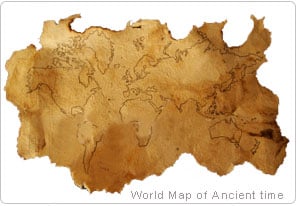Dicaearchus was the first to introduce reference lines in maps which later led to the genesis of the geographical coordinates. A student and disciple of Aristotle, Dicaearchus contributed immensely in the field of cartography and emerged as one of the legendary map maker of ancient world.
Dicaearchus of Messina lived and worked around 300 B.C in Greece and was an ardent follower of Aristotle. As a pupil, Dicaearchus was passionately interested in the sciences of Geometry and Geography. Dicaearchus used his knowledge in the creating the map of the known world.
Dicaearchus’ map was marked with two reference lines. One of the reference lines ran through the Pillars of Hercules and the city of Rhodes. This reference line, running in the east-west direction, divided Dicaearchus’ areas of familiarity into two halves. The Pillars of Hercules marks Gibraltar in the present map. The ancient island city of Rhodes can be found between Turkey and Greece. The horizontal reference line present in the map of Dicaearchus now represents the latitude placed at 36° north latitude. The other reference line that featured in the map by Dicaearchus runs in the north-south direction through the city of Rhodes.
Along with the maps, Dicaearchus is reputed for other writings on geographical, philosophical, historical and political subjects. Some of his esteemed works are listed below:
|
|
The geographical works of Dicaearchus were subject to criticism by Strabo and Polybius. Not succumbing to criticism, Dicaearchus emerged as one of the renowned cartographers of the world.
| For more information you can refer to: | ||

